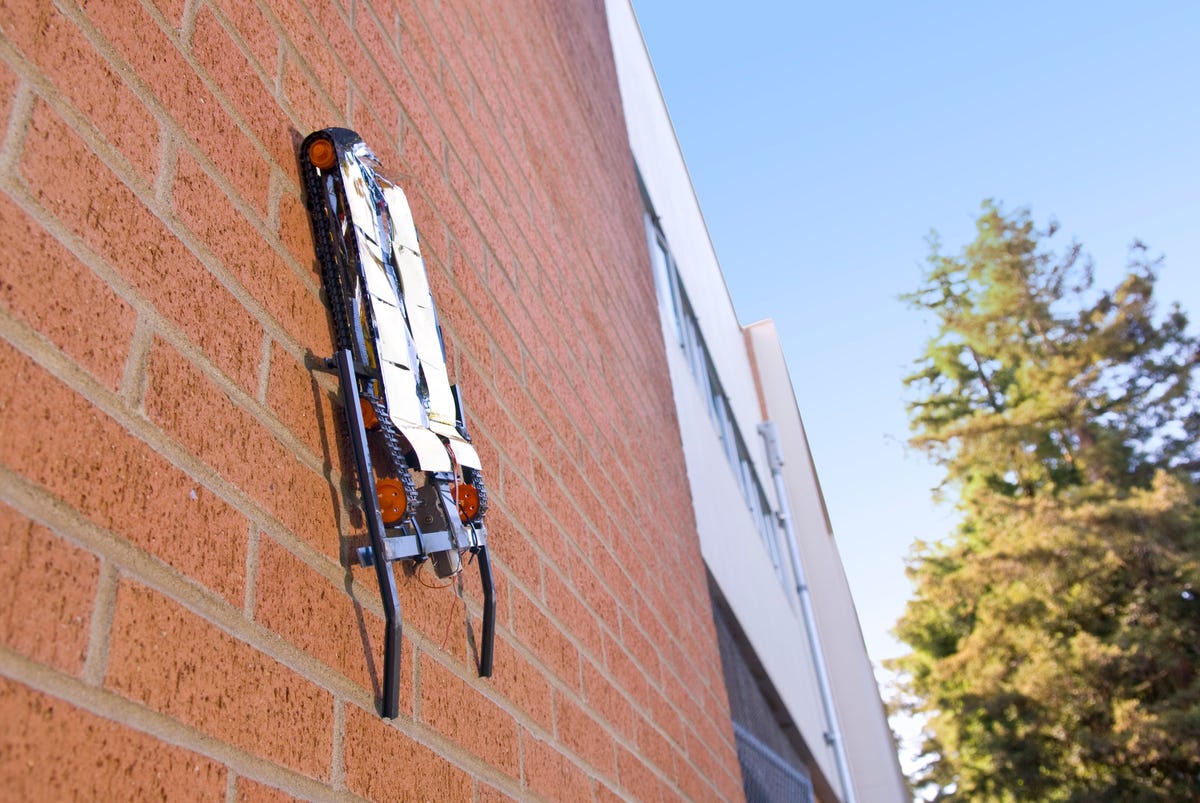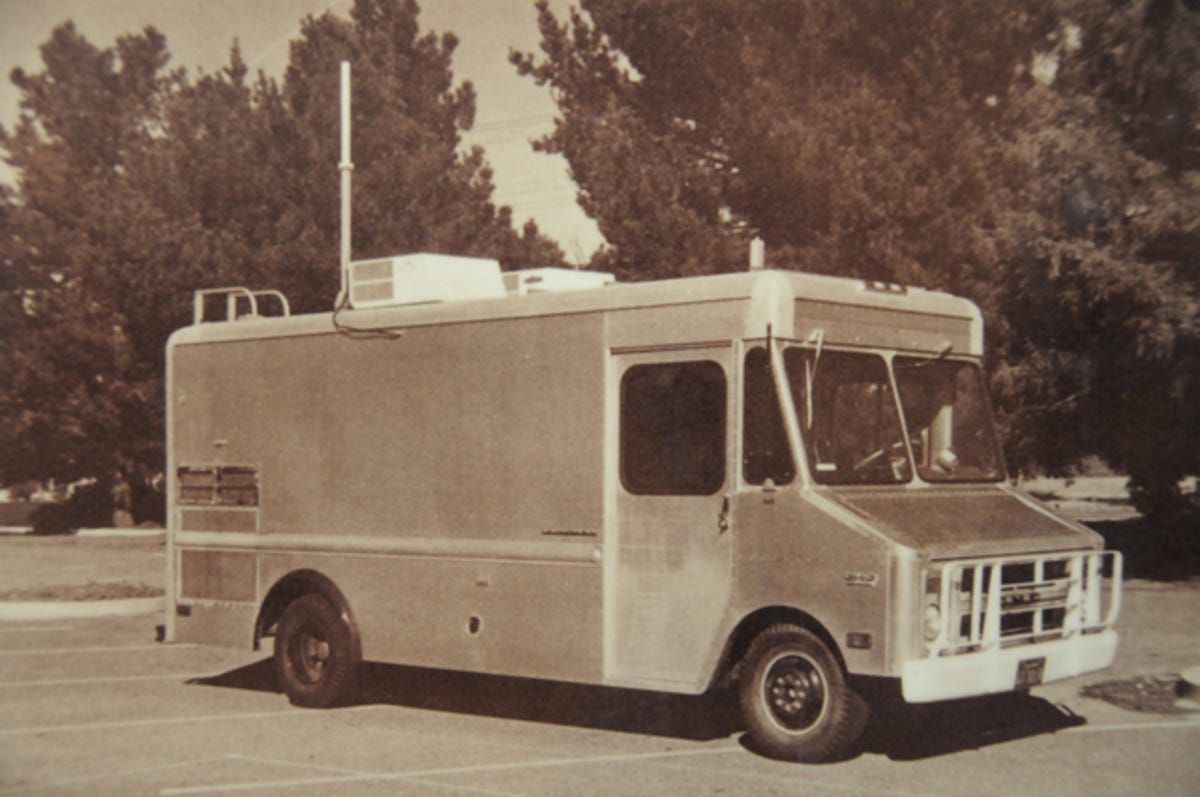At SRI, wall-climbing robots and much more (photos)
Road Trip at Home: For more than six decades, SRI has been a Silicon Valley leader at turning research into successful ventures.

Climbing brick
Founded in 1946 as the Stanford Research Institute, SRI is now a stand-alone nonprofit that specializes in doing research and development and then spinning that work off into start-up companies.
Today, SRI has more than 2,200 employees and more than 1,000 projects. More than 70 percent of its work is done on behalf of government customers, and it specializes in five discrete areas: bio--with an emphasis on drug development; information technology; physical science; education; and engineering systems.
One of the most exciting projects currently under way at SRI centers on what is known as electroadhesion, a technology that is meant to allow small objects--such as a simple robot--to adhere to just about any kind of surface, regardless of whether it's horizontal or vertical.
Seen here is one such robot, a working prototype that can climb a wall without any type of glue, grasping, or any other assistance. Instead, it relies on charged electrodes that create an attraction with the surface.
SRI is developing the technology with an eye toward consumer products, but there are many other types of applications that are being considered as well.
Climbing the wall
Gripping
Drug conversion
This machine is used in the testing of such drug conversions. Researchers at SRI must determine how well a drug makes the journey from a patient's mouth to his or her blood stream, since that trip goes through both the stomach and the intestines.
This machine tests the efficacy of what are called "enhancers," or chemical compounds that help get the drug through the stomach or the intestine.
Injecting a drug
Pill machine
Pediatric tool
But SRI feels that there are real markets to be created in the development of new medical tools designed specially to address the needs of young children suffering from some of these diseases.
This device is an example of one Garcia's group is working on--it is designed to join a tube to a baby's esophagus when the child has a condition in which it is born with the esophagus not attached to its stomach.
The thought is that by developing such tools for the pediatric market, it may be possible to both create that new market, and find a way to extend the device design to the adult market as well.
English to Pashto
Currently set up to run on an Android phone, the system has been programmed to recognize a wide variety of spoken phrases that might be used in certain kinds of situations and translate them automatically. Seen here is an English-to-Pashto translation, which is also delivered as live audio.
Pashto to English
Arpanet node

Arpanet van
The first mouse
That day, Douglas Engelbart, the director of the Augmentation Research Center at (as it was then known) Stanford Research Institute, spellbound 1,000 people with his 100-minute presentation. On the one hand, he presented what he and his partner, SRI chief engineer Bill English, had just completed: the world's first publicly see mouse. And on the other, they showed off the first public viewing of hyperlinks and navigable windows.
This is a replica of that first mouse, as seen in a display case at SRI showcasing the institution's most famous innovations.
Oscar
This is the Oscar that the institution won, in 1959, for its work developing the Technicolor electronic printing timer, "which allowed the film industry to bring accurate color movie prints to theaters faster."
Ten Emmys
Robotic surgery
Deafnet
Centibot
Traumapod
In 2005, DARPA awarded an SRI multi-organization team a $12 million contract to build it. "The...program is an important step toward ensuring a future generation of battlefield-based unmanned medical treatment systems, or 'trauma pods,' to stabilize injured soldiers within minutes after a battlefield trauma and administer life-saving medical and surgical care prior to evacuation and during transport."

